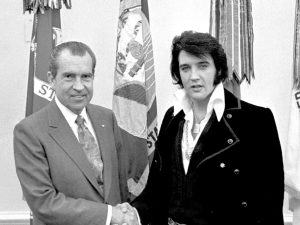Queen Elizabeth II: The monarch of our fairytales
September 28, 2022
On Sept. 8, Queen Elizabeth II was pronounced dead after a 70-year reign over the United Kingdom and 14 other commonwealth realms. On Wednesday, Sept. 14, the queen’s four children, grandchildren and certain members of her staff trailed her coffin as it was processed through central London.
At just 24 years old, Queen Elizabeth took accession after her father died. Before her life as a monarch, however, she only had a few short years of being a naval wife and served in the women’s branch of the British army during the second world war. Unlike many of her successors, Queen Elizabeth was made to be a monarch. It was during her speech on her 21st birthday that this would be recognized by not just her people but by the world. Queen Elizabeth said, “I declare before you all that my whole life, whether it be long or short, shall be devoted to your service and the service of our great imperial family to which we all belong.”
Queen Elizabeth, while subjected to much scrutiny during her time, was noted to never show her dissatisfaction, reigning with great fortitude. According to the New Yorker, the queen made “I have to be seen to be believed” her aphorism of ruling. She upheld this value in being the first monarch to visit Ireland after gaining its independence in 1921. In channeling her inner Dame Vera Lynn, Queen Elizabeth said “We will be with our friends again; we will be with our families again; we will meet again.” while the world turned upside down during the pandemic.
According to the Washington Post, though Democracy left her no governing power, Queen Elizabeth was ahead of her time in spearheading notions of equality and diversity in the Commonwealth and, by most accounts, she made her views discreetly known to successive prime ministers that she met with weekly. Margaret Thatcher, long serving Prime Minister, upheld labor policies and a reluctance to impose sanctions on South Africa. These decisions left her at odds with the queen’s views. The royal press secretary, Michael Shea, told journalists that the queen regarded the prime Minister’s views as “uncaring, confrontational and socially divisive.”
Although the queen was built to be a monarch, The New Yorker remarks her majesty as the “ceremonial head of state, empty mirror for the nation to gaze upon itself, the C.E.O. of a rich dysfunctional dynasty.” The queen remained steadfast surviving King Charles affair with Camilla, the death of Princess Diana, Prince Andrew and his connections to Epstein, rumors that Prince William was having an affair, and Megan and Harry receiving freedom from the “royal cage”. Even with dismissing themselves from the royal lifestyle, Harry and Megan, in an intense interview with Oprah discussing their leave from the firm, never accused the queen of anything, especially not of being callous or racist.
Yes, her majesty was met with a “dysfunctional dynasty” but her steadfastness, unwavering loyalty to country and years on the throne lead to her defining the constitutional monarch of Europe and of the world. This does, however, pose the question, can one family represent an entire nation and its values with Queen Elizabeth’s passing and the dysfunctional dynasty that is left to take charge?
King Charles, while being raised and trained to take his mother’s position, has been the direct cause of much scandal and scrutiny that the queen received during her reign. Because of this bad public view on the new king, will Britain follow in the footsteps of Barbados in removing the head of state or Jamaica whose prime minister said his country would be “moving on” from the British monarchy. This is hard to say.
Will anyone ever again share Queen Elizabeth’s innate appreciation of the mystique of the monarch or her natural royal dignity? Time can only tell. As for the late sovereign, she was regarded as the “splendor of our political and moral inheritance,” according to the Washington Post. It will be difficult to name any royal that would carry the power as graciously and convincingly as the queen did.
Many of our childhood fantasies and stories told have been about a good queen or king, or, if not, replaced with a good princess or prince. Queen Elizabeth showed us that it does not have to be imaginary, and it can, in fact, be a reality.
Long live the Queen of England.
Long live Queen Elizabeth.






